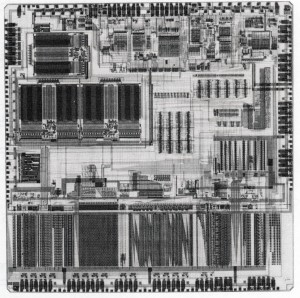.
IBM made a series of internally expanded PCs which act as mainframes, running 370 code locally, and initially they did it by working with Motorola to use
a 68000 with custom microcode, and with Intel to make an 8087 with customised behaviour. They also used a second, stock, 68000, to mop up the bits not already covered running a conventional software emulation. So, that's a desktop mainframe, in 1983, for $9000.
Quote:
With the XT/370 IBM had Motorola implement most of the System/370 instructions in a new microcode (developed by IBM) for the 68000. Nick Tredennick of Motorola worked with IBM to implement the microcode 68000 structure. Nick had previously developed the logic design, and microcode for the original Motorola 68000 processor in the late 1970’s so was very familiar with it. Not all of the instructions could be made to fit in a 68000 so a second, generic, 68000 emulated them in software. Floating point instructions were implemented in a similarly customized Intel 8087 FPU. These 3 chips were on a card called the PC/370-P. Two other cards were required called the PC/370-M (Memory) and PC/3277-EM which made the system appear to be a 3277 terminal. These 3 cards together implemented a System/370, albeit slowly.

(From
BYTE's guide to the PC)
In parallel, they started on a custom chip with a backward-compatible extension of the 68000-style bus, compatible with 68000-style peripheral chips.

Quote:
The Micro/370 never made it into full production. Speculation in 1986 was great as to whether IBM would release their next mini computers based on the Micro/370. or on the new Intel 80386. IBM of course chose the 80386 ending the short, yet interesting life of the Micro/370.
Lots of detail here:
http://www.cpushack.com/2013/03/22/cpu- ... micro-370/https://en.wikipedia.org/wiki/PC-based_ ... r_XT.2F370https://en.wikipedia.org/wiki/IBM_3270_PC
